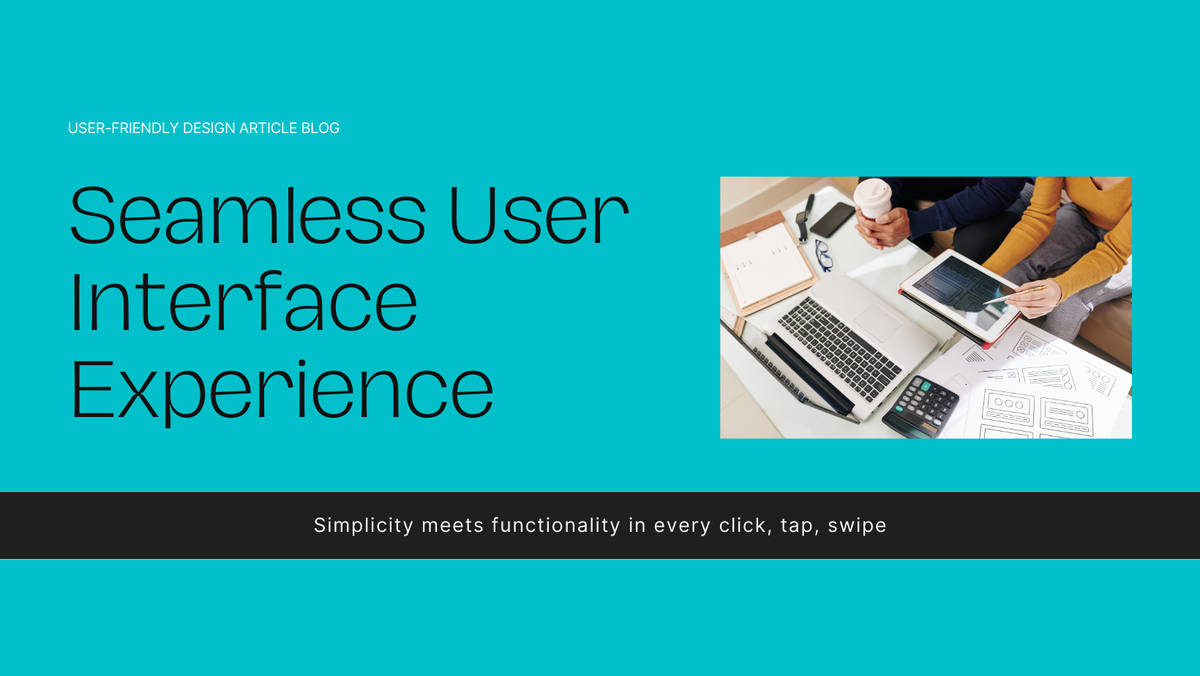Designing a User-Friendly Interface
In digital design, a user-friendly interface is paramount for ensuring an intuitive and efficient user experience. A well crafted interface not only facilitates seamless interaction but also significantly enhances user satisfaction by minimizing frustration and confusion. Moreover, it aligns with business objectives by driving engagement, increasing retention, and ultimately contributing to the achievement of strategic goals. Prioritizing usability in design thus serves as a critical factor in the success and effectiveness of digital products.
To ensure effective design outcomes, conduct comprehensive user research through surveys, interviews, and usability testing to obtain valuable insights about your target audience. Develop user personas to accurately represent various audience segments . Prioritize and address user needs and preferences to inform and enhance your design decisions.
To ensure an optimal user experience, it is essential to employ a minimalist design approach that avoids overwhelming users with excessive elements. Consistency should be maintained throughout the interface by using uniform design elements such as colors, fonts, and buttons. Additionally, clear and straightforward navigation is crucial, allowing users to easily find the information they seek without confusion.

In digital design, a user-friendly interface is paramount for ensuring an intuitive and efficient user experience. A well crafted interface not only facilitates seamless interaction but also significantly enhances user satisfaction by minimizing frustration and confusion. Moreover, it aligns with business objectives by driving engagement, increasing retention, and ultimately contributing to the achievement of strategic goals. Prioritizing usability in design thus serves as a critical factor in the success and effectiveness of digital products.
To ensure effective design outcomes, conduct comprehensive user research through surveys, interviews, and usability testing to obtain valuable insights about your target audience. Develop user personas to accurately represent various audience segments . Prioritize and address user needs and preferences to inform and enhance your design decisions.
To ensure an optimal user experience, it is essential to employ a minimalist design approach that avoids overwhelming users with excessive elements. Consistency should be maintained throughout the interface by using uniform design elements such as colors, fonts, and buttons. Additionally, clear and straightforward navigation is crucial, allowing users to easily find the information they seek without confusion.

Usability testing should be conducted regularly to gather feedback and identify areas for improvement. Implementing A/B testing enables the comparison of different design versions to determine which performs more effectively. Additionally, it is crucial to continuously collect and analyze user feedback to inform data-driven design decisions.
Incorporate established design patterns and standards to ensure familiar and predictable user interactions. Employ visual hierarchy to effectively direct user’s attention and emphasize critical information. Additionally, integrate micro interactions to create engaging and meaningful user experiences.
In conclusion, designing a user-friendly interface necessitates a keen focus on simplicity, intuitive navigation, and responsive design. Ensuring that the interface aligns with user needs and expectations is paramount. Readers are encouraged to apply these principles in their own projects and to continually solicit user feedback for ongoing refinement. Embracing these practices will significantly enhance the overall user experience and effectiveness of the interface.
-written by Aathil Ahamed
Checkout more of our articles on website design and developments on our blogs page

